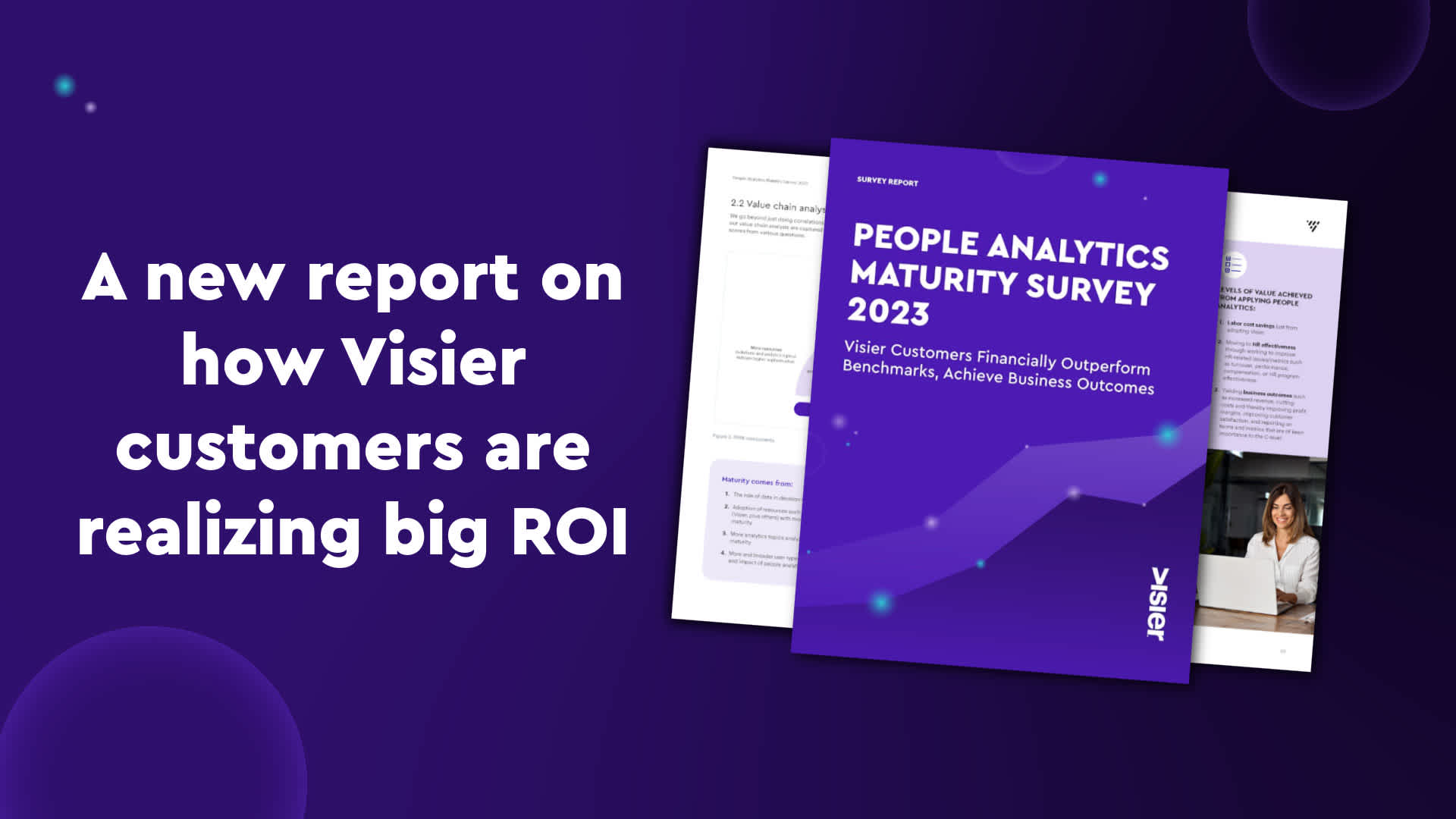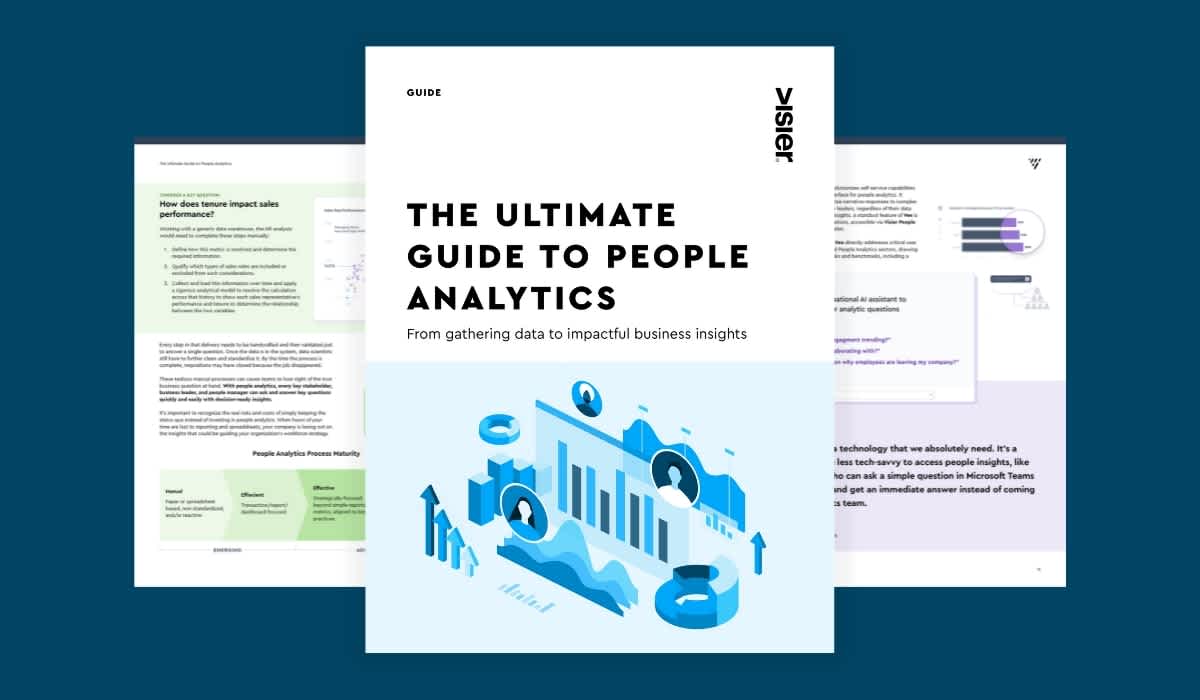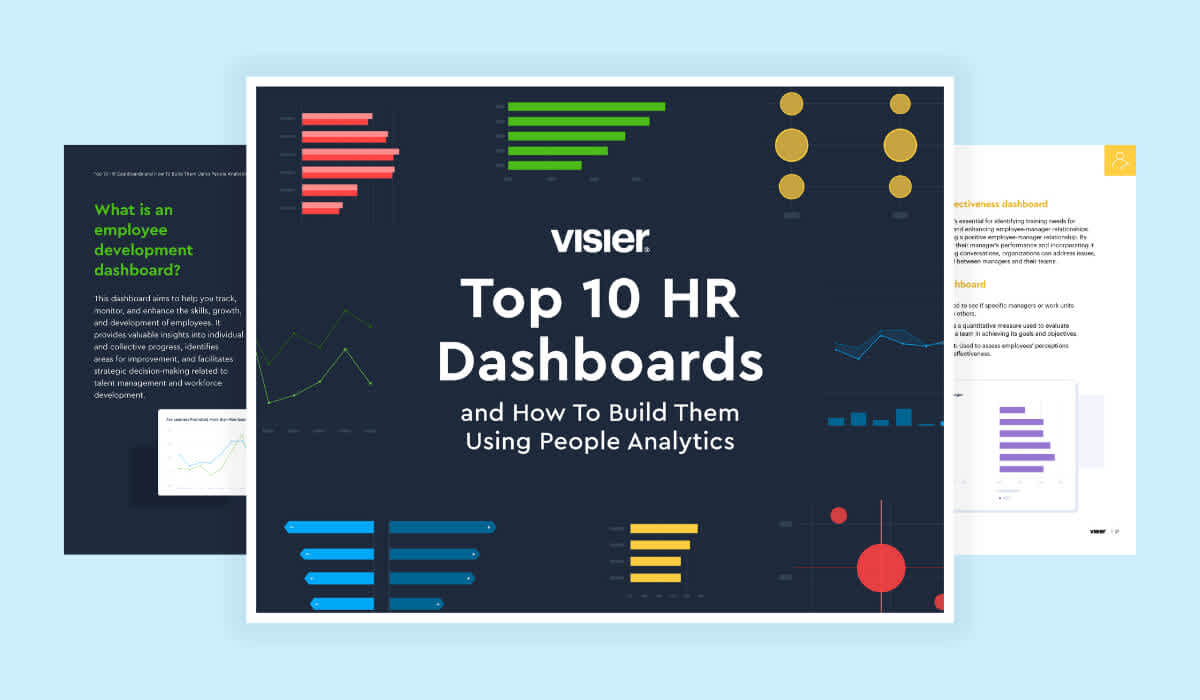8 Benefits of Using People Analytics
From employee retention to increasing productivity, there are many benefits of people analytics. We've ranked the top eight benefits here.

Bad hires, regrettable attrition, cost overruns, poor productivity—these are just a few of the daily challenges HR leaders face—which people analytics can help. Deciding how to tackle these issues is not easy: When it comes to human dynamics, things aren’t always what they seem.
People analytics is the difference between guessing and making fact-based decisions. There are many examples in life where we would never leave decisions to chance: will the bridge support the vehicle’s weight or is the accused innocent?
But instead of analytics, many organizations rely on the kind of one-dimensional workforce metrics that do very little to deliver true insight into the root causes of problems. A report on hundreds of employees, for example, only tells you about hundreds of employees—not why people are leaving the organization or why absenteeism is on the rise.

Why people analytics is crucial
A volatile and constantly changing business environment has created an urgent need for better people decisions everywhere. To be truly successful, you must be able to interrogate your data to determine the root cause of problems, apply appropriate interventions, and anticipate future developments based on hard evidence. This process is at the heart of effective people analytics strategies.
The power of people analytics in everyday decision-making is undeniable: According to DDI, organizations that excel at people analytics are 3.1 times more likely to outperform their peers.
Many common HR metrics do not provide strategic value to the business. Take headcount reports. They often fail to help HR articulate what is needed to meet a business goal or need. They fail to reveal how staffing shortfalls will impact revenue goals or net promoter scores.
By shifting the focus away from isolated headcount metrics towards dynamic trends that matter to the business, strategic HR leaders are commanding attention and gaining C-suite trust. We’re now seeing the CHRO alongside the CEO and CFO, forming a triumvirate at the top of the organization, where the people strategy and decisions related to it are rooted firmly in data-driven insights.
With people analytics, you can capture your CEO’s attention by digging deeper into strategic HR metrics such as:
Revenue per employee
Quality of hire improvement
Performance turnover in key jobs
Dollars of revenue lost due to position vacancy days
HR effectiveness
New hire failure rate
Diversity hires in customer-impact positions

Benefits of using people analytics
There are several opportunities to leverage people analytics across the employee lifecycle. We cover this more deeply in The Financial Impact of People Analytics report, but here’s a few examples of how analytics drives value and has a quantitative impact on organizations:
Employee retention
Achieve fair pay
Hiring
Learning and development
Increasing diversity
Improve spans and layers
Increase productivity
1. Employee retention
Mitigating turnover is one of the most effective applications of people analytics. The impact is most visible when organizations focus on a particular role or set of employees. Targeted retention informed by people analytics can significantly reduce employee turnover.
For example, looking at the aggregate impact of manager turnover reduction, across all our customers with analytics in place for at least two years, they have reduced manager turnover by 17% compared to the market.
2. Achieve fair pay
Analyzing compensation practices and optimizing can help organizations achieve fair pay. Companies can use people analytics to assess proposed candidate offers, counter-offer considerations, and promotions.
This capability allows the team to instantly compare compensation profiles, incentive scores, performance ratings, and attributes of employees to others on the same team or in similar positions. It also provides a competitive advantage when top candidates are considering opportunities from multiple employers or when high performers are considering leaving.
3. Hiring
Talent acquisition analytics can help organizations identify attributes that produce long-term, high performing employees. It can help organizations know where they get their best candidates and whether they are losing people in the acquisition funnel.
This enables organizations to optimize spend on recruiting activities and the pipeline of candidates. It can also pinpoint the right attributes for future candidates to maximize the recruiting investment.
One financial institution was able to leverage this information to improve their hiring process. With people analytics, they reviewed their hiring practices by analyzing each hiring manager’s time-to-hire rates and discovered that efficiency was a key indicator of success.
Then, they implemented a standardized hiring process inspired by the success of their efficient hiring managers. Not only did the bank improve their candidate experience, the bank’s new hire retention improved by 14%. This step ensures that every candidate has the same quality and transparency in their hiring experience.
4. Learning and development
Companies can use people analytics to optimize training modes and sources. Learning analytics that connects the impact of training and development on business outcomes enables organizations to ask the right questions and get the right answers.
Pitney Bowes determines which products their employees have learned how to use with people analytics. This enables managers to determine whether an employee has completed the right training before sending them on a service call.
5. Increasing diversity
Diversity, equity, and inclusion can be a very powerful thing for businesses. Analytics plays a key role here: from answering questions about the state of diversity throughout an organization and across its employee lifecycle, to identifying areas where intentional or unintentional bias may be occurring, to helping companies understand how to effectively address problem areas. People analytics gives organizations more visibility into diversity initiatives.
For example, Merck KGaA uses people analytics to continuously track progress on diversity and inclusion. By the end of 2018, women occupied 32% of leadership roles (manager-level and above) group-wide at the organization. As a result, the organization was able to exceed its 2021 target of maintaining a 30% representation of women in these positions.
6. Optimize workforce planning
Organizations with people analytics can analyze workforce data to understand the current state of the workforce and inform discussions on talent needed to meet business objectives.
One financial services organization used this information to considerably improve its workforce planning process. It reduced its workforce planning cycle by 25%, improved the accuracy of its hiring plan from 78% to 95%, and increased the accuracy of its headcount plan from 60% to 95%.
7. Improve spans and layers
People analytics makes it possible for organizations to optimize spans and layers, which can reduce costs and improve revenue. Merck KGaA used people analytics to find the most effective team size that would deliver the highest commercial performance. They combined data linked to performance management and various spans of control and matched this with sales outcomes for each team size range.
They quickly found that no magic number exists for their span of control, instead successful teams are largely determined by their manager. Some leaders will succeed with more than 20 reports, while others do better with less than five.
8. Increase productivity
People analytics can also help organizations optimize their productivity. When companies can link actual hours spent on activities to an optimal target time and monitor against this index, they are able to increase productivity and save money.
One healthcare organization reports saving $500 million over three years through creating and monitoring a productivity index to deliver hospital services.

Overcome your people data challenges
HR data is inherently messy and difficult to integrate. But it would be a mistake to let that stop you from moving forward with analytics.
One of the biggest mistakes an organization can make is thinking they need to clean and warehouse their data before doing analytics. Companies starting down the path of analytics should aim for accuracy instead of perfection.
Good business decisions require accurate data, but the data does not need to be perfect all the time. Think of Finance: Financial decisions are changed because of adjusted costs, restated data, or realignments–and those perpetual adjustments are widely accepted.
Not all decisions are equally important. With this in mind, organizations should map data accuracy to the impact of the decisions being made based on that data. There are times when you need to have near-pristine data, such as determining changes to compensation. On the other hand, ‘good enough’ data can already tell you an action is necessary. If your turnover is between 25% to 30%, it doesn’t matter that you don’t know precisely your turnover, you know you need to act.
The best way to clean data is to start with a business question, such as: ‘Are we retaining the right people?’ Then you can bring all your relevant data to the light and work with it while improving it. This approach drives two favorable results: you won’t let good data go unused and the people who are responsible for the data and accountable for the decisions that are based on that data will be given a more compelling reason to get the data in the system, get it right, and get it done.
For organizations that go down the path of trying to build their own analytics systems (using BI toolsets like Tableau or Qlik, or trying to integrate data into their transactional HR systems for more comprehensive reporting), having access to data scientists or other analytics experts is critical to their success.
However, there are other approaches, which can make analytics easier to gain traction with HR practitioners. A platform like Visier can act as a sort of ‘easy button’ for analytics – reducing the skill set needed to leverage analytics and to deliver insights in an intuitive way.
The road ahead
Looking back over the last 10 years, the workforce and workplace have been massively disrupted. Jobs have gone from posts in newspapers, to online job boards, to today where recruiters contact you through your LinkedIn profile. Smartphones, outsourcing, contingent workers, the gig economy, and other social, economic, and technical changes are disrupting how we work. Even larger changes are on the horizon as we start to look at automation and its impact on the workforce. This challenges the very nature of the role of HR.
Over the next five years, we will move to a far more strategic role for human resources. Where data takes the forefront to help the business make decisions. Great HR functions today are strategic and play a vocal role in critical business decisions. They don’t just translate the business strategy, but drive it.
In the future, the CHRO alongside the CEO and CFO will form a triumvirate at the top of the corporation, where the people strategy and decisions related to it are rooted firmly in data-driven insights.
Benefits of people analytics
Learn the basics of people analytics—also known as HR analytics or workforce analytics—in this introductory article.
New research shows the causal link between people analytics and improving the business performance of enterprise organizations.
People analytics dashboards help you view and analyze human capital data quickly and easily. Find out how to use them.



